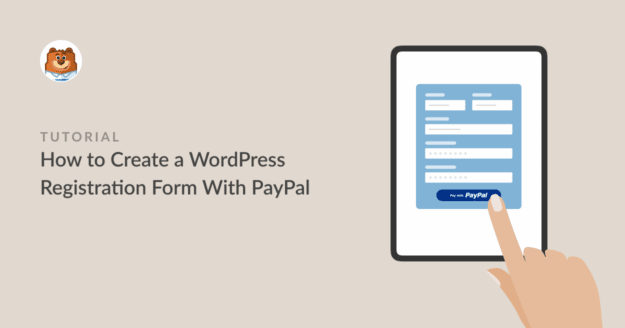Do you want to create a WordPress registration form with payment options?
A one-page registration form with PayPal enabled is just the solution you need. Not quite sure how to create such a form? Using a WordPress plugin like WPForms for your website makes it super easy.
In this post, we’ll show you how to create a WordPress registration form to accept PayPal payments.
Create Registration Form With Payments Enabled
Can I Collect Payments on WordPress?
Yes, you have several options for collecting payments on your WordPress site. If you’re building a registration form, the easiest thing to do is to use a drag and drop form builder plugin like WPForms that connects to a payment gateway. This way, all your steps for building the form and setting up payment are simplified in one place.
On a WPForms Pro license, you can use the User Registration and PayPal Commerce addons. This allows you to create a user registration form and add a PayPal checkout field to easily collect payments during the registration process.
How to Create a WordPress Registration Form With Payment (PayPal)
In This Article
1. Install WPForms
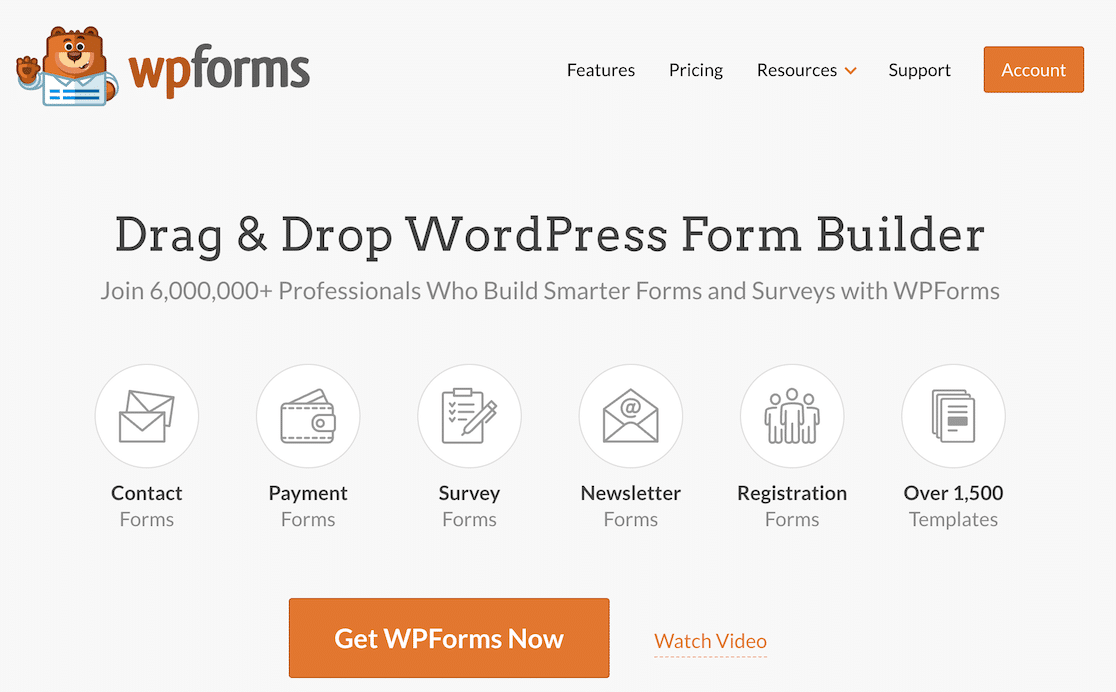
WPForms is the easiest way to create a PayPal registration form in WordPress. All you need is a WPForms Pro license and a PayPal Business account.
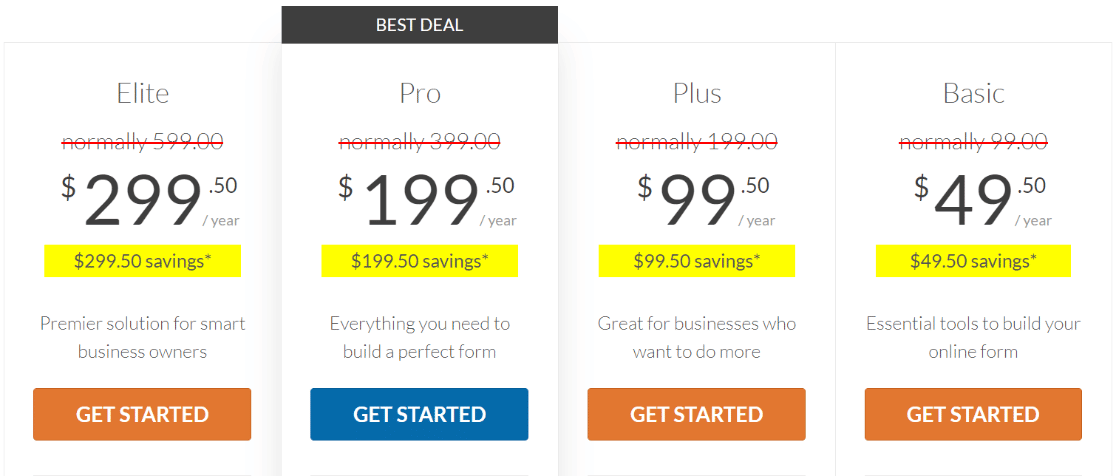
Once you’ve installed WPForms, you’ll also need to install the User Registration and PayPal Commerce addons.
2. Install the User Registration + PayPal Commerce Addons
To get started with this step, head into the WordPress admin area and click through WPForms » Addons.
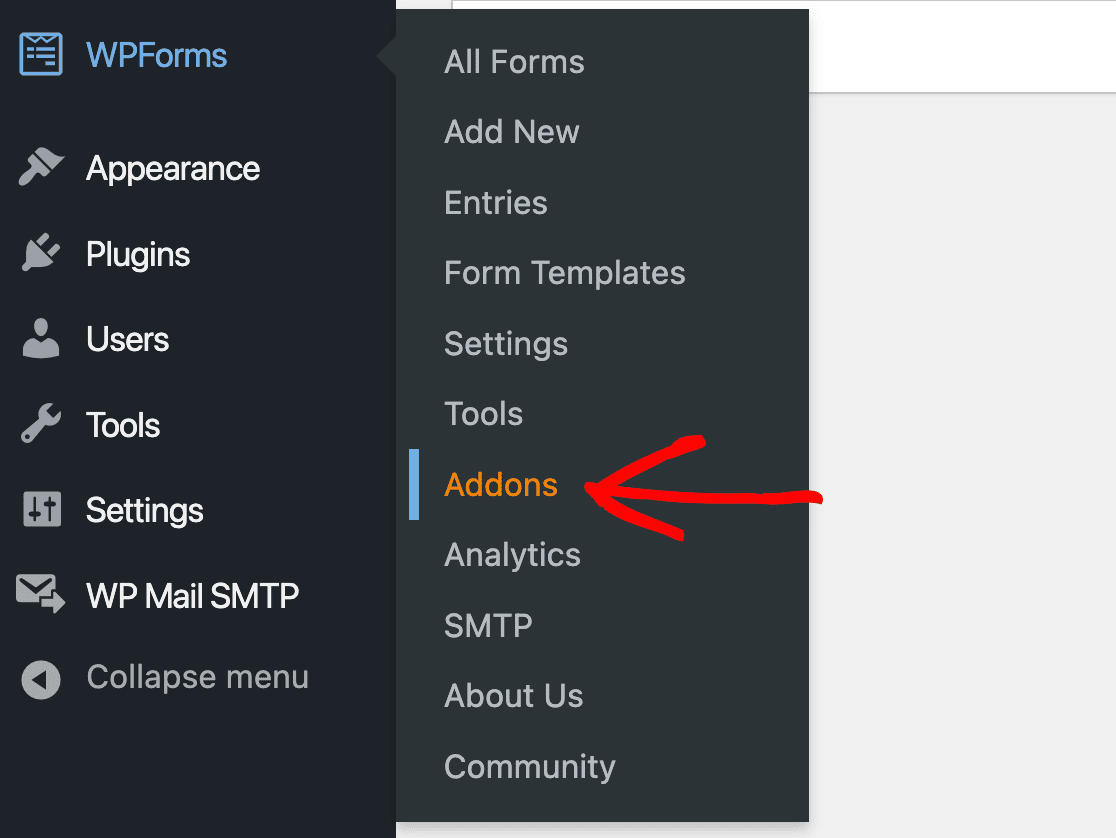
Then scroll down till you find the User Registration Addon, or use the search bar. When you find it, click Install Addon.
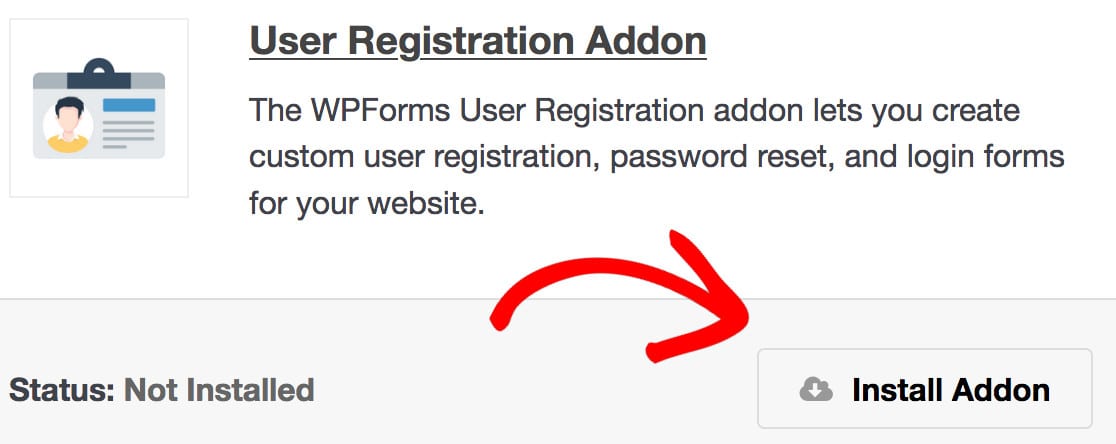
Next, look for the PayPal Commerce Addon from the same page and install it.

These two addons give you the form functionality you need to accept PayPal payments from your registration form. After installing these addons, we have to configure our PayPal Commerce integration.
3. Configure PayPal Commerce
Configuring PayPal Commerce is easy. From the WordPress admin area, click through WPForms » Settings » Payments.
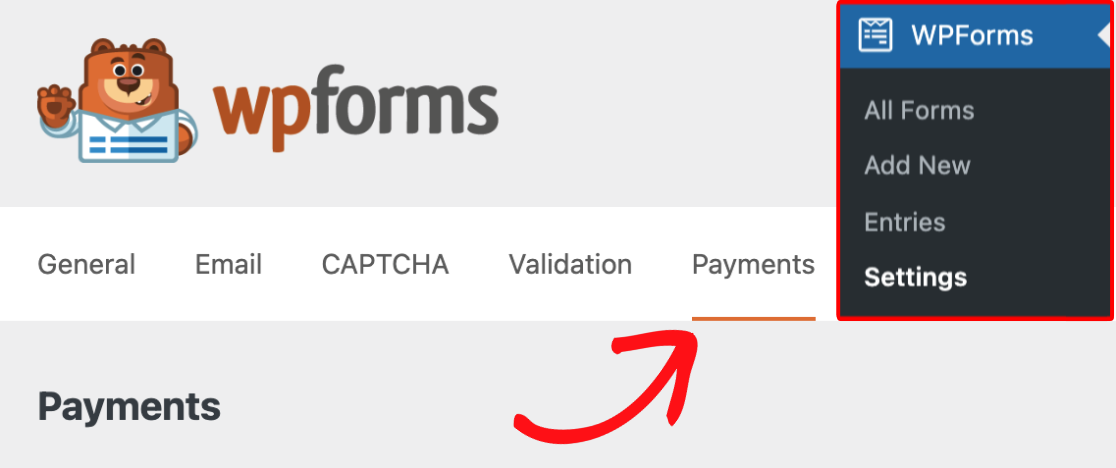
From there, scroll down till you find the section labeled PayPal Commerce, then click Connect with PayPal Commerce.

This will redirect you to the PayPal login page, where you’ll enter your PayPal email address. Remember, this needs to be the email address that you use with your PayPal Business account.
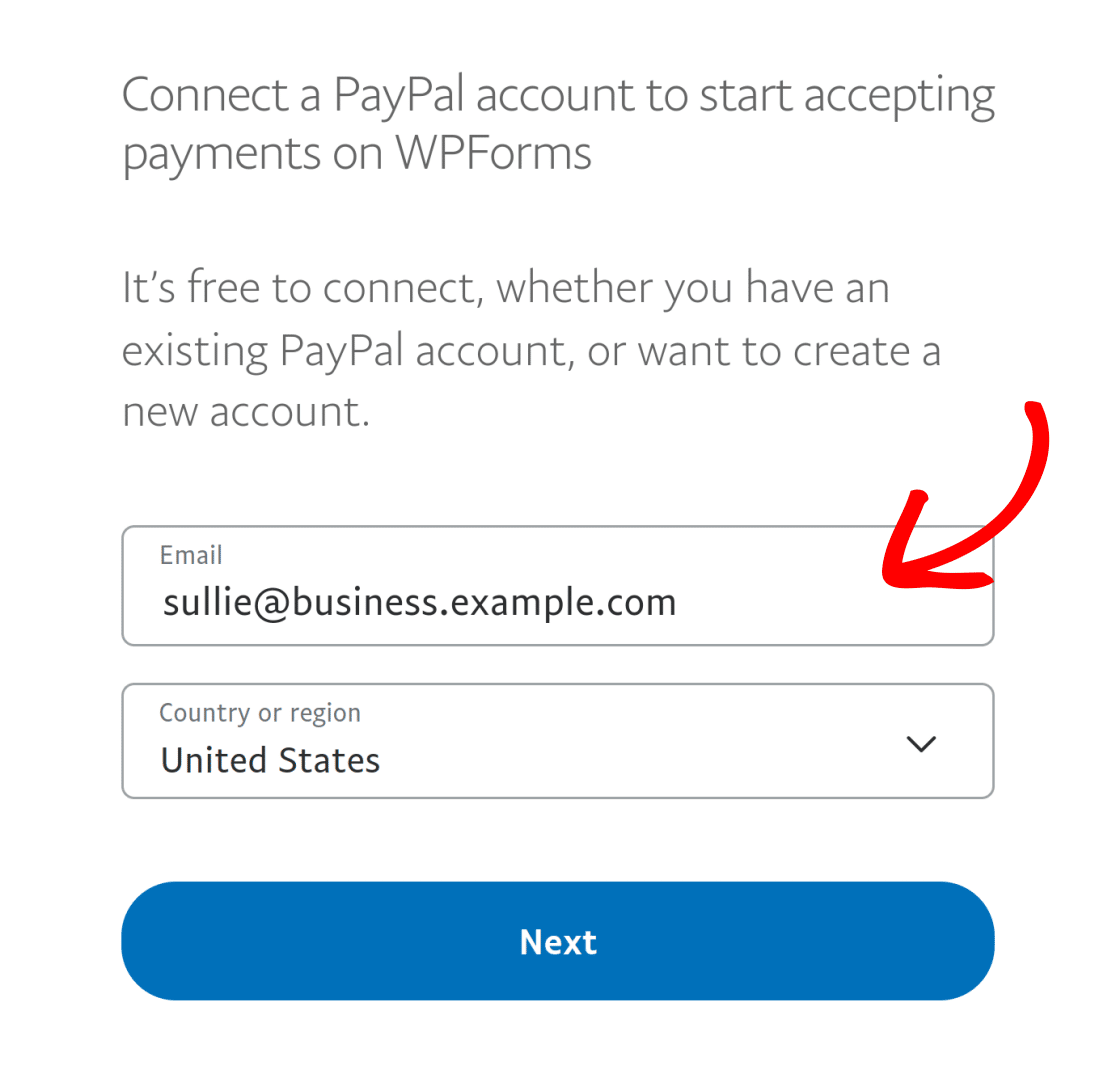
Once you’ve gone through the PayPal setup, which takes just a few minutes, you’ll see that your WordPress website is now connected to PayPal in Production mode. This means that any transactions using the PayPal Commerce field will be live.
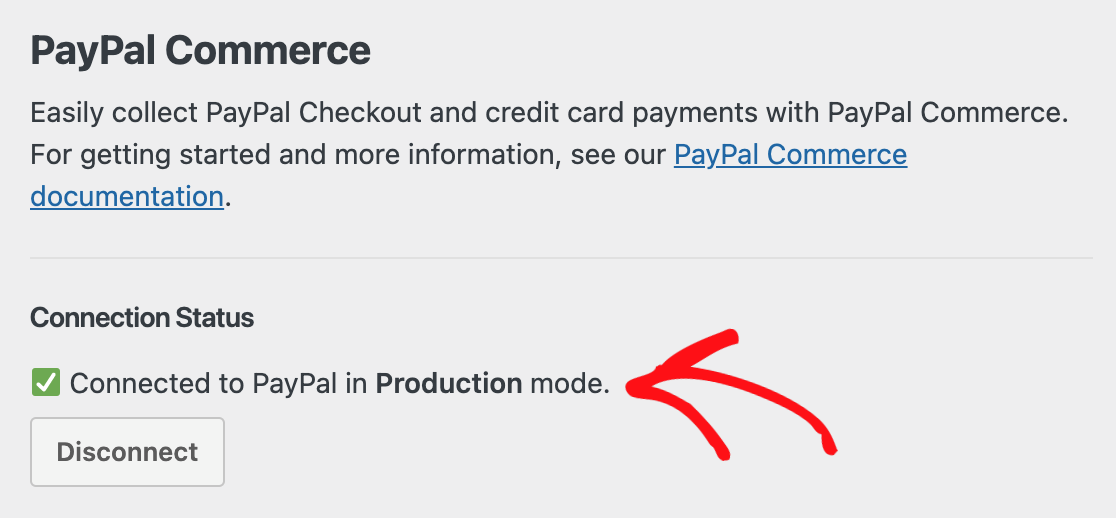
There’s also the option of connecting with the PayPal Sandbox by ticking the Test Mode checkbox if you’d like to test things out first.
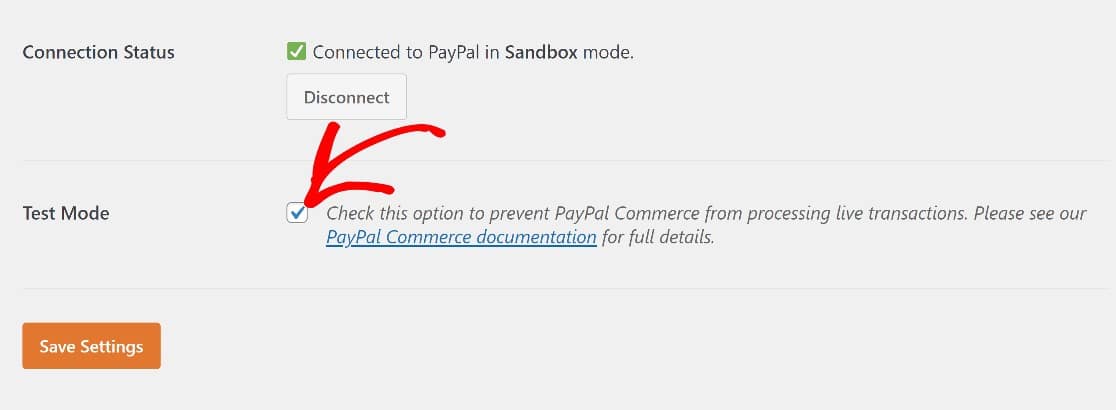
When you have your settings where you want them, you can click the Save Settings button. Now we’re going to create our new form.
4. Create a User Registration Form
We can create a user registration form from scratch using the form builder or by customizing a form template.
For our example, we’ll use the User Registration Form template, which is only available to Pro version users with the User Registration Form addon enabled. The Online Event Registration Form Template could also work for this purpose.
To create the user registration form, click on WPForms » Add New.
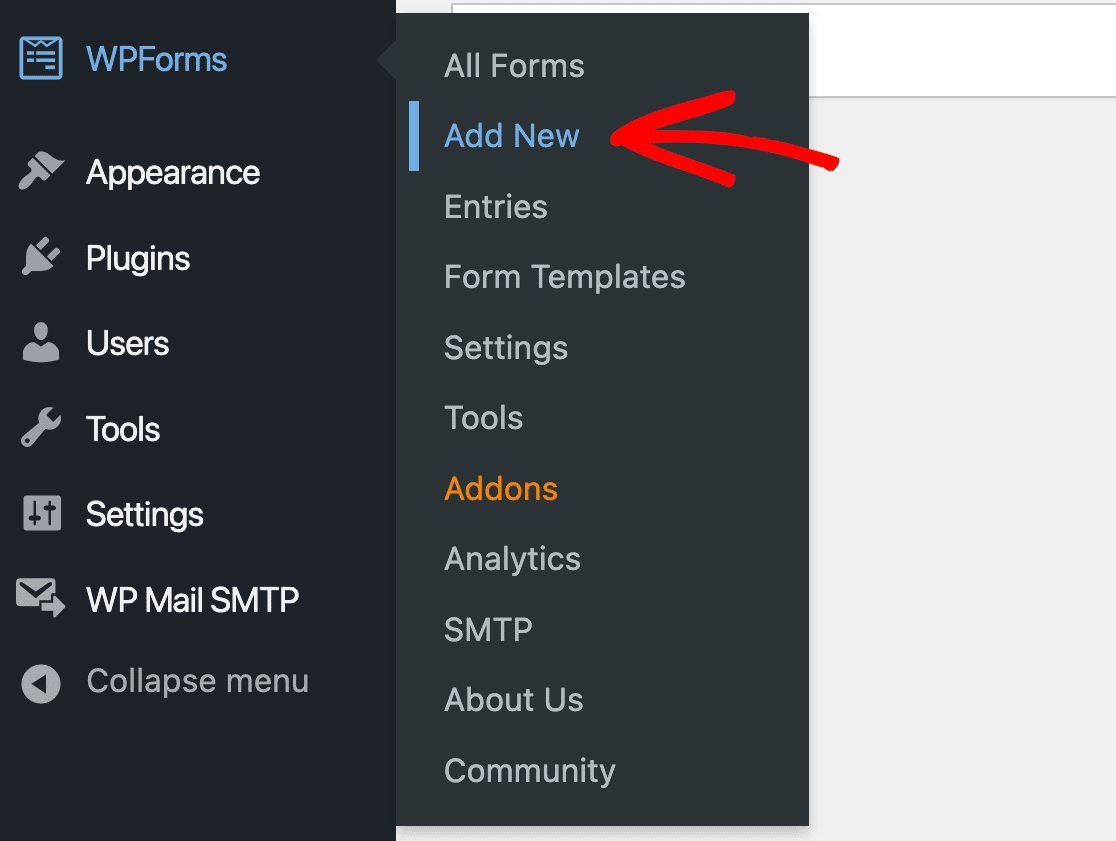
This will open up the WPForms template gallery, where you’ll find hundreds of pre-built form templates. You can find the User Registration Form template using the search bar.
Click Create Form to select it.
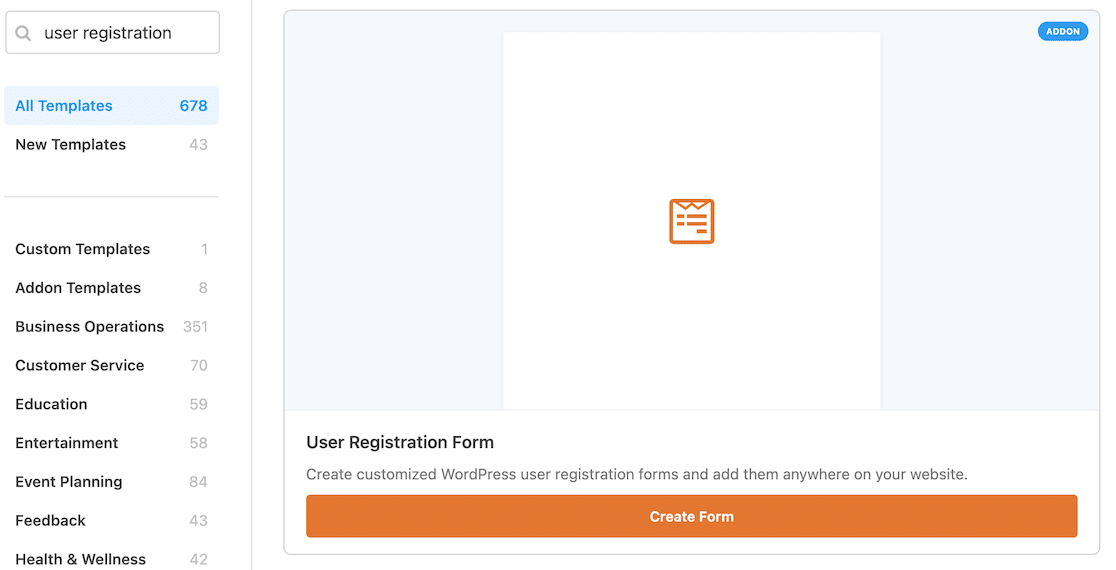
The User Registration Form Template will now open in the WPForms form builder. You’ll see the form template in the preview area on the right of your screen, with the form field panel on the left.
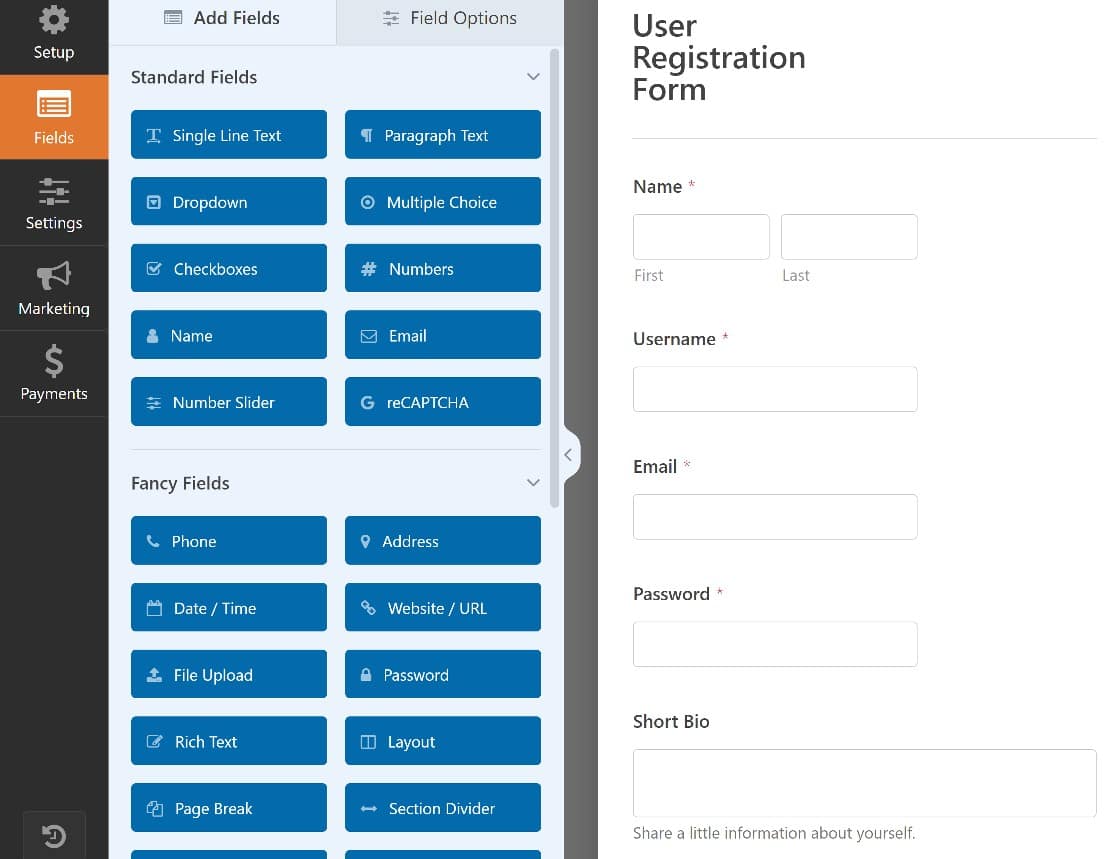
You can add custom fields or remove form fields using the drag-and-drop editor to customize your form to suit your needs.
If you’d like to learn more about setting up and configuring the user registration form, here’s a comprehensive guide to using the user registration addon.
When your user registration form is customized to your liking, the next step will be enabling PayPal Commerce on the form.
5. Enable PayPal on Your User Registration Form
With your user registration form set up, the final step we’ll take is enabling the PayPal Commerce field on the form.
First, scroll through the form field panel to find the PayPal Commerce field in the Payment Fields section. Drag and drop it into the form builder.
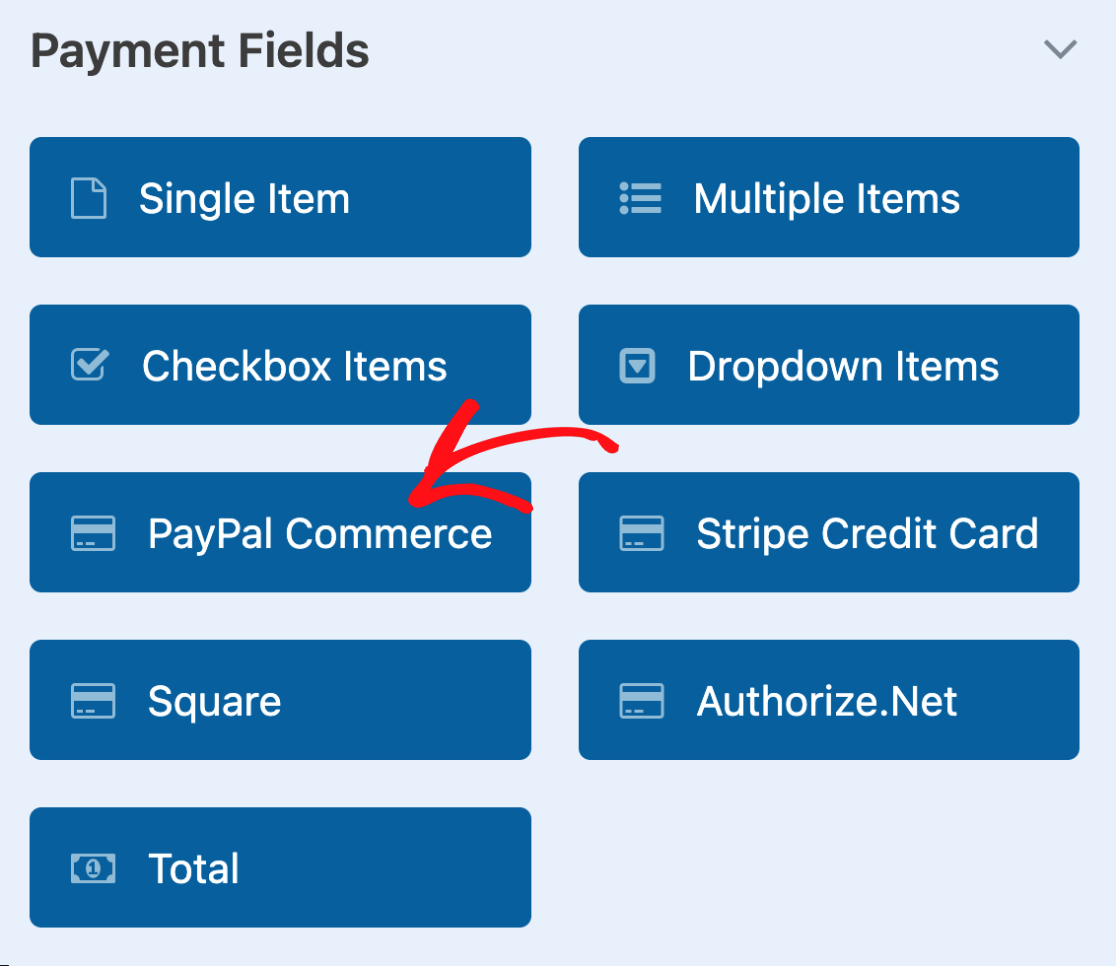
You’ll now see a popup prompting you to enable PayPal Commerce payments. Click OK.
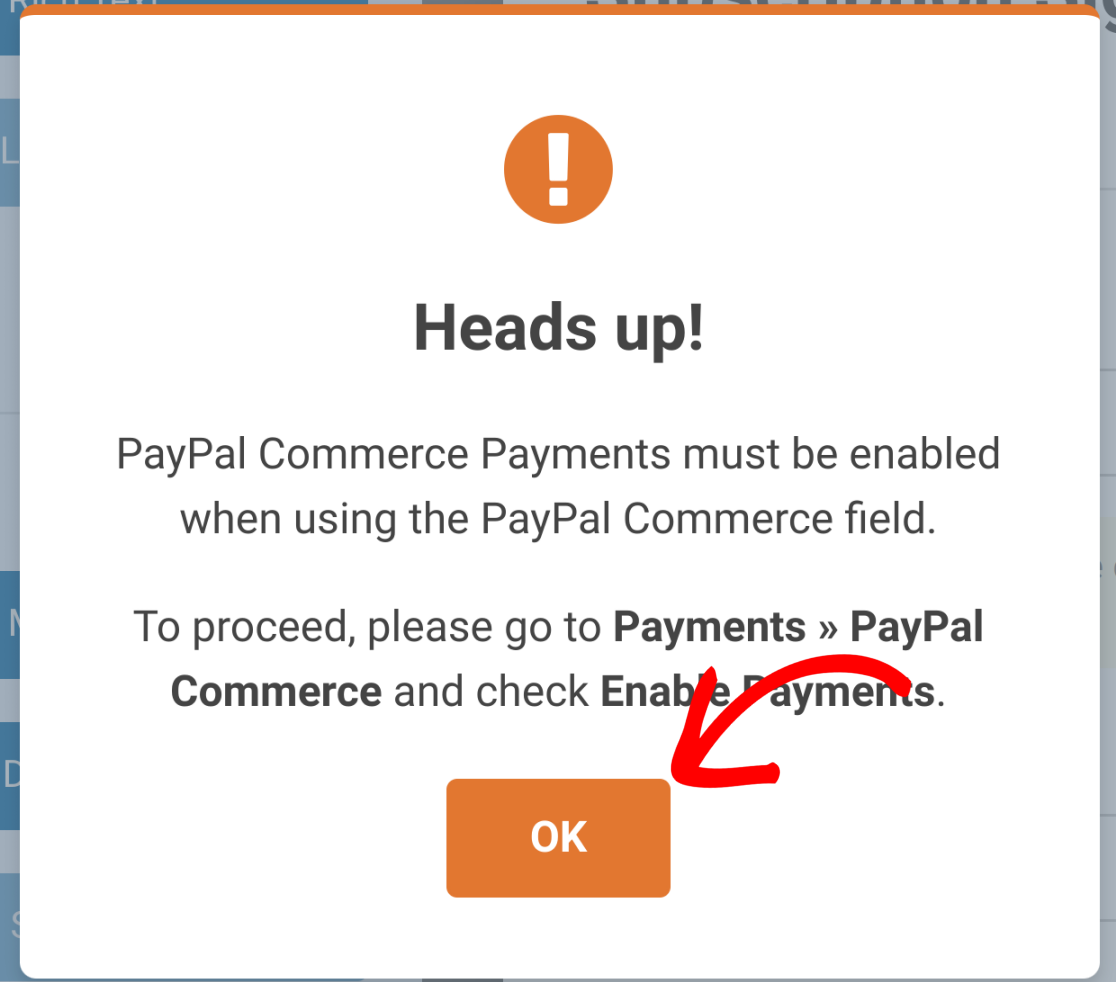
Before you hop into the Payments tab, you may want to play around with the PayPal Commerce field first. Simply click on it to open Field Options on the left of your screen.
Here, you can choose which payment methods and credit cards you’d like to use on your site. And you can also change some styling and other optional settings in the Advanced tab.
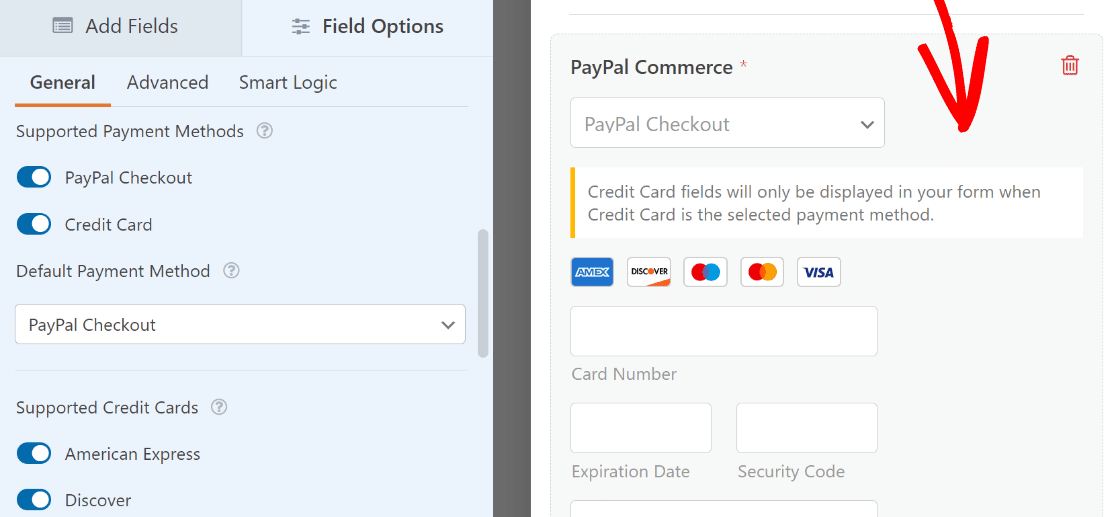
Now that we’re done working in the PayPal Commerce field, navigate over to the menu on the left sidebar and click on Payments » PayPal Commerce to get to the PayPal payment settings page.
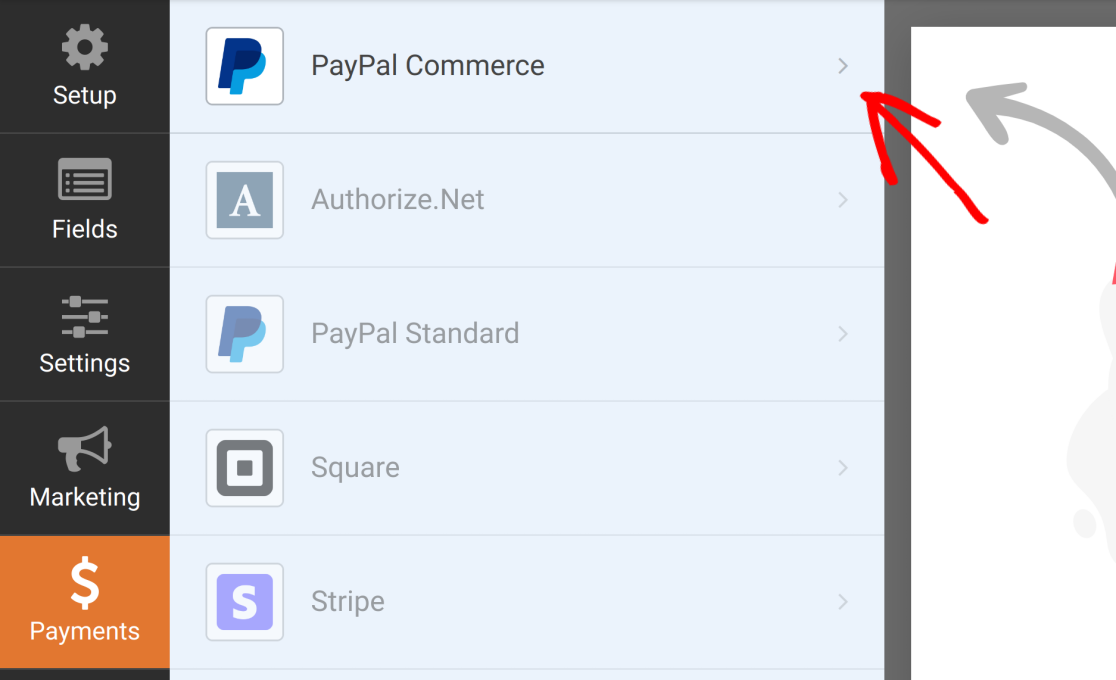
PayPal Commerce supports both one-time and recurring payments. You’ll need to enable at least one to fully set up PayPal Commerce on your user registration form. We’ll go with one-time payments for this guide.
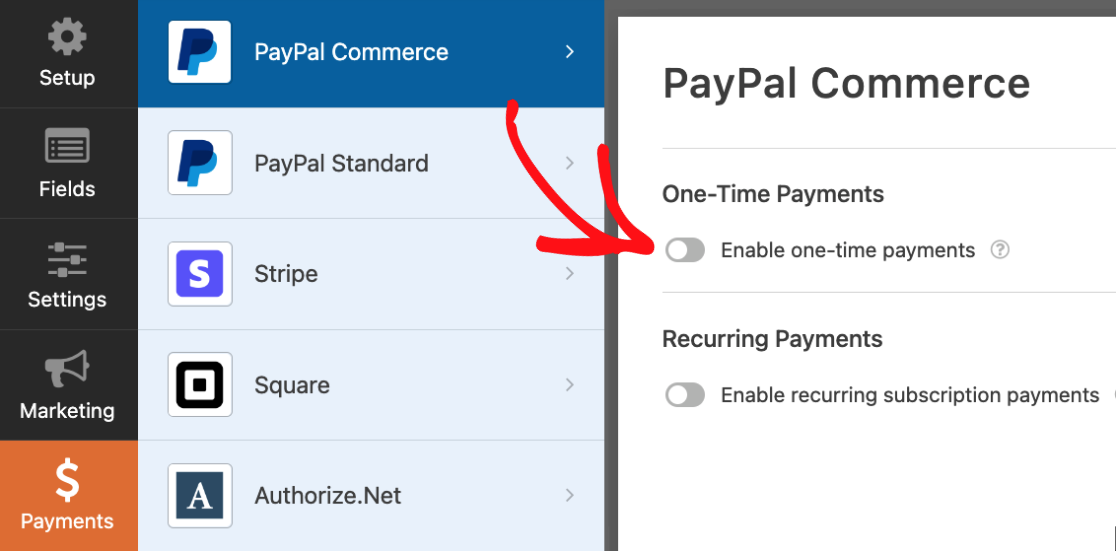
One thing to remember is that you can add both one-time payment and recurring payment options, but you’ll need to use conditional logic to determine which one to apply on a case-by-case basis.
Next, you may want to look at a few optional settings. These fields are set up to automatically pull corresponding data from the new user registration fields to the PayPal Commerce field:
- Name
- Billing Address
- Shipping Address
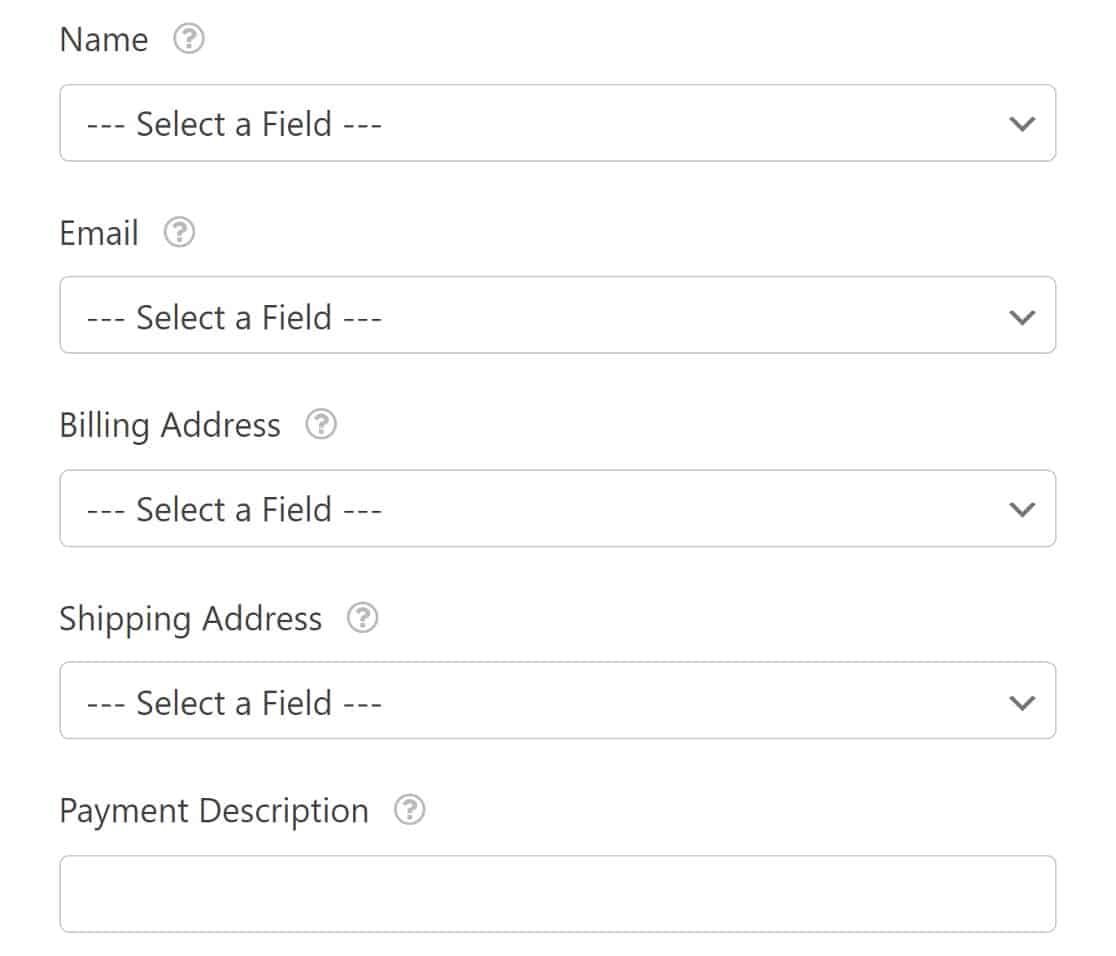
Just use the dropdowns to select the appropriate form fields for each item.
For a detailed guide to PayPal Commerce settings, here’s our PayPal commerce addon documentation.
Once you’re done with these settings, there’s just one more step you’ll need to take. You’ll need to enable Ajax form submission for the PayPal Commerce field to work.
Enable Ajax Form Submissions
Access your form settings from the left sidebar menu by clicking Settings » General » Advanced. Now you can toggle the Ajax form submission button to enable it.

Your custom registration form will now collect PayPal or credit card payments when you publish the form.
6. Publish Your WordPress Registration Form With Payment
To wrap things up, publish your form by clicking the Embed button at the top right corner of the form builder page.

You’ll have the option of publishing your form on a new or existing page. For this guide, we’ll choose to create a new page.
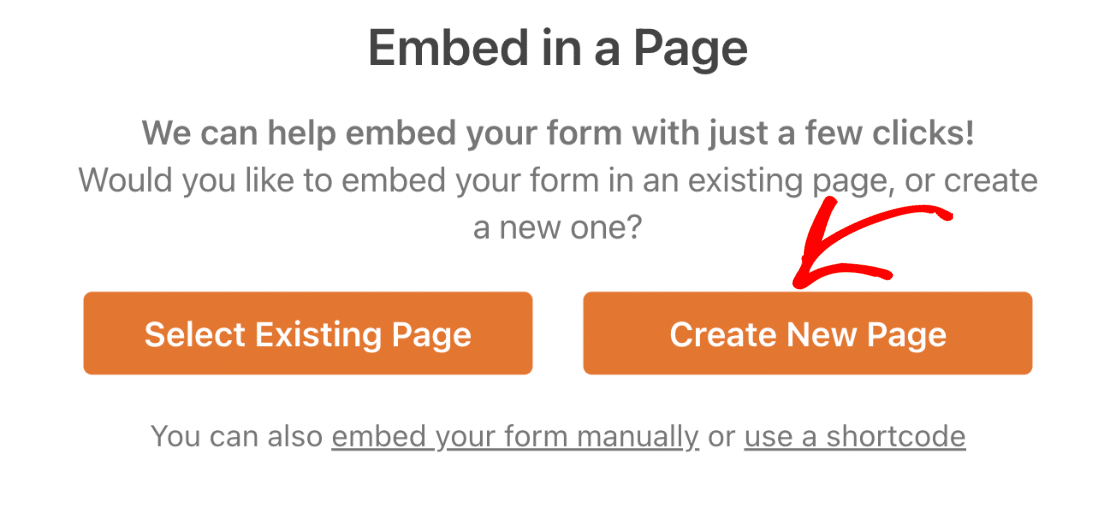
Give your new page a name and click publish.

When you check this page on the front end, you’ll see that you have a fully functional PayPal registration form. Aside from the payment, the information that users enter in the form will be used to set up their user logins.
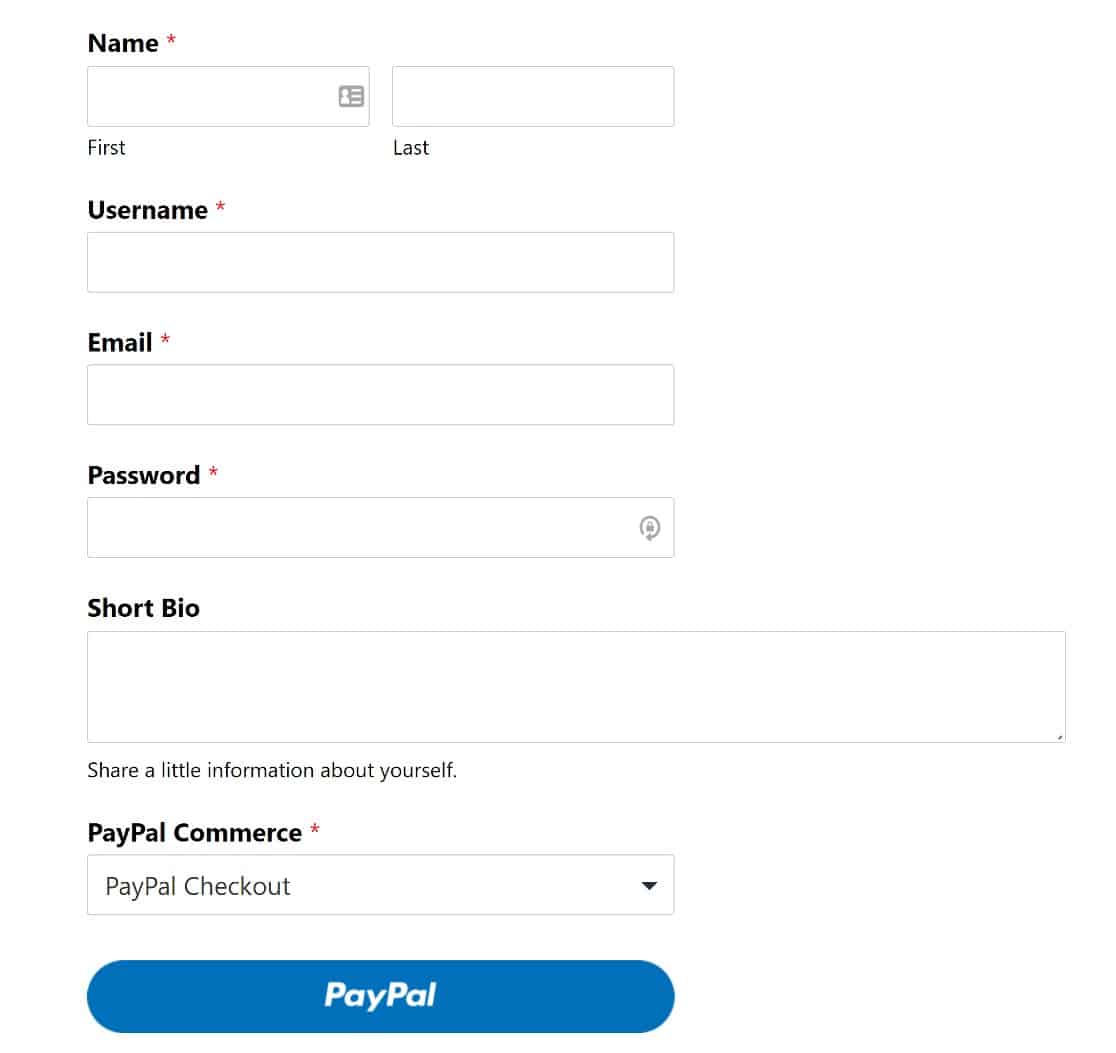
Note that it’s also possible to embed your forms using a shortcode or widget, as well.
You can also create a group registration form with repeatable fields. With the repeater field feature, your website visitors can add and remove fields as needed.
And that’s it. Your registration page is complete! Now you can create a WordPress registration form with PayPal enabled and gain registered users.
Next, Customize Your Email Notifications
Ready to take your email notifications to the next level? Don’t miss your chance to reach users after they click the submit button. Learn to connect WPForms to ChatGPT to send AI-generated form notifications.
You can also attach files to your notification emails. This is useful if you have an eCommerce store to sell digital downloads.
Create Registration Form With Payments Enabled
Ready to build your form? Get started today with the easiest WordPress form builder plugin. WPForms Pro includes lots of free templates and offers a 14-day money-back guarantee.
If this article helped you out, please follow us on Facebook and Twitter for more free WordPress tutorials and guides.

